





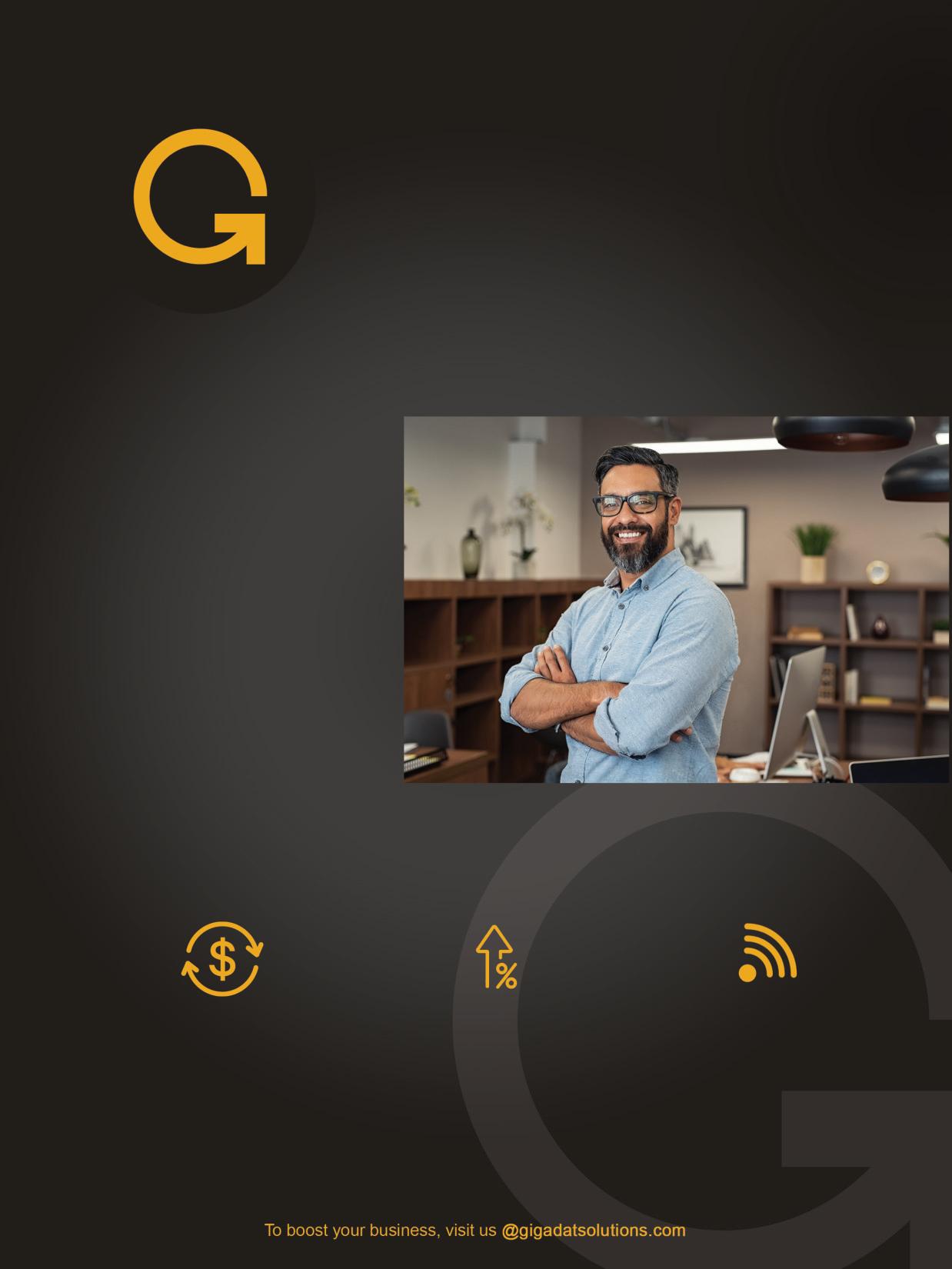




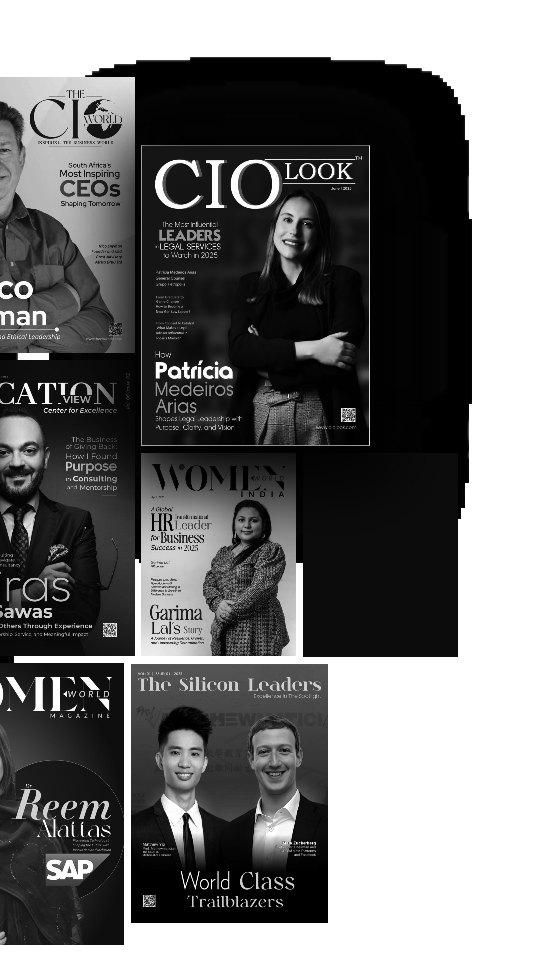
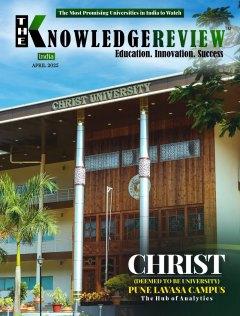
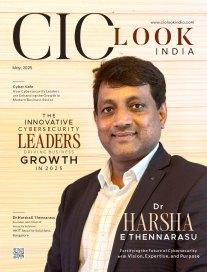

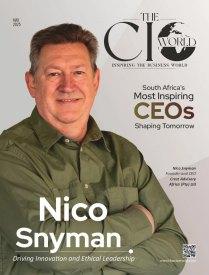
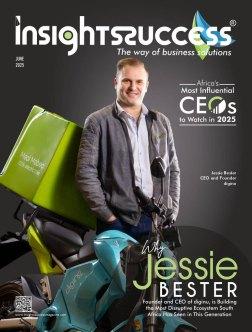


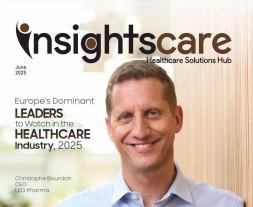

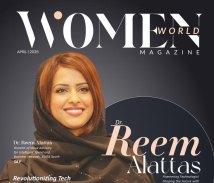
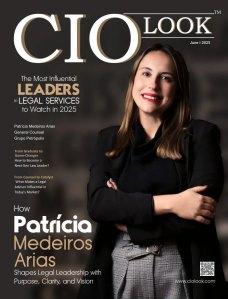
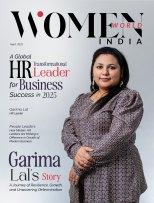
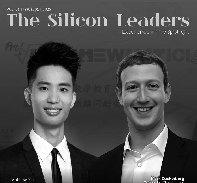

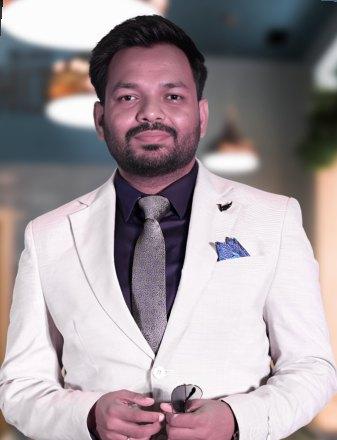





























DearEsteemedReaders,
We are seeing the vibrancy of 2025,
whereintheedificeofeducationforthe future is getting revolutionized by technology and global connectivity, it is with deepestregardthatInsightsSuccessIndiapresents thisissuetoProfessorDr.RichardC.Larson.
AsInsightsSuccessIndia'sDirector,Ihavehadthe privilege of watching several leaders who only respond to change; however, Prof. Dr. Larson is a visionarywhoproactivelydesignstheverychange thatweareobservinginglobaleducation.
His efforts, specifically through programs such as MIT BLOSSOMS and the Learning International Networks Coalition (LINC), break beyond geography and conventional pedagogical boundaries. He lives by the mantra that real leadership in education is not about marginal change,butaboutsystemchangesthatopenaccess, encourage critical thinking, and enable learners globally. His capacity to combine sophisticated
operational research with common goods educational materials is evidence of his singular brillianceandabsolutecommitment.
It is our belief at Insights Success India that we must bring into the limelight those individuals whose influence is not only profound but revolutionary. Prof. Dr. Larson's dedication to harnessing technology to deliver scalable, highqualitylearningisdeeplyinsyncwithIndia'sown hopesforeducationalexcellenceandaccessibility. He is not simply a thinker; he is an international force multiplier in the pursuit of a more educated, equitableworld.
We encourage you to read on and become immersedinthepagesthatfollow,tolearnmoreof the approaches, philosophies, and raw effect of a leaderwhoistrulyremakingthefutureoflearning forgenerationsyettocome.
Sincerely,
Managing Director and CEO, Insights Success India
O p e n i n g S t a t e m e n t F r o m t h e E d i t o r
In a t i m e m a r k e d b y
unprecedented levels of technologicalprogressandrising demand for affordable, quality education, some individuals clearly emerge as trailblazers. Among them, MIT's Professor Dr. Richard C. Larsondoesnotjustqualify,butbyall means, is 'The Most Influential Global Thought Leader in Educational Change for 2025,' of this special Insights Success India's edition. His pathbreaking work over several decades not only transformed pedagogic methods but has actually revolutionized the way technology andoperationsresearchcanbeusedto bring about democratization of knowledgeglobally.
Prof.Larson,affectionatelyreferredto as "Dr. Queue" due to his
groundbreaking work in queueing theory, has been able to blend his knowledge of complex systems and data science with that of the educational sector. His influence is especially felt in programs that go beyond the traditional classroom setting. As the MIT BLOSSOMS initiative's (Blended Learning Open Source Science or Math Studies) FounderandPrincipalInvestigator,he has led the development and worldwide dissemination of free, interactive video math and science lessons.These tools enable educators and institutions, particularly in disadvantaged areas, to provide excellent quality STEM instruction, closingeducationalgapsandinspiring a passion for learning in tens of thousandsofstudents.


Inaddition,Prof.Larson'sfar-sighted nature created an international consortium of the Learning International Networks Coalition (LINC), and headquartered it at MIT that actively advances technologyenabled education by convening educators, technologists, and policymakers to collaborate on and implement scalable solutions for learning. In developing regions like Africa, China, and the Middle East, LINC's activities, all with a deep commitment to global educational equity, have ensured cross-cultural collaboration and galvanized innovativeeducationalinitiatives.
WhatreallymakesProf.Larsonstand out is a systems-thinking approach to educational change - focused beyond
the'what'andfindingoutthe'how'of learning. It calls for critical thinking, flexibility, and knowledge of underlying systems. His work stands as a testament to the principle that educational leadership is about much more than simply transferring knowledge; it's about creating resilient, flexible learners who can faceanuncertainfuture.
In 2025, as digital platforms and AI keep transforming learning, the lifelong commitment of Prof. Dr. Richard C Larson to innovation, accessibility, and human-focused education solidifies his place as a real giantintheindustry
Haveaninsightfullread!





e a t u r i n g
rof. Dr. Richard La�on's idging Knowledge d Real-World Impact: gacy in Operations esearch and Education
08 a g e A r t i c l e s
26 P a g e Key Catalysts The Vital Role of a EdTech Transformation Strategist in Evolving Education Industry
32 P a g e Smart Learning An Overview on Learning Innovation in Modern Education Sector
CHIEF OPERATING OFFICER
EDITOR-IN-CHIEF
CONTENT
MANAGING EDITOR

DESIGN
VISUALIZER

SALES
VICE PRESIDENT
TECHNICAL
TECHNICAL HEAD
SME-SMO
DIGITAL MARKETING MANAGER

Insights Success Media Tech LLC 555, Metro Place North, Suite 100, Dublin, OH 43017, United States
Insights Success Media & Tech Pvt. Ltd. 512, Brand Square, Kunal Icon Road, Pimple Saudagar, Pune, Maharashtra 411027, India
Email : Info@insightssuccess.in For Subscription : www.insightssuccessindia.com
Copyright © 2025 Insights Success Media and Technology Pvt. Ltd., All rights reserved. The content and images used in this magazine should not be reproduced or transmitted in any form or by any means, electronic, mechanical, photocopying, recording or otherwise, without prior permission from Insights Success Media and Technology Pvt. Ltd. Reprint rights remain solely with Insights Success. Printed and Published by Insights Success Media and Technology Pvt. Ltd.
RNI NUMBER: MAHENG/2018/75953




in Educational Transformation, 2025





Bridging Knowledge and Real-World Impact
Legacy in Operations Research and Education


“Learn actively with pencil and paper, immersing yourself fully in puzzles and paradoxes drawn from science and the every day ”
Inaworldsaturatedwithinformation,knowingmoreno longer guarantees doing better The modern age has ushered in a torrent of data, yet the ability to distil actionable wisdom from it remains rare. Prof. Dr. Richard Larson has spent his life addressing this very gap transforming academic knowledge into practical strategiesthattangiblyimprovesystems,cities,andlives.For him,dataisnotmerelysomethingtobestoredorstudied—itis a tool, a catalyst for smarter decisions that make societies moreefficient,equitable,andprepared.
Asapioneerinoperationsresearch,Prof.Dr Larson’swork spans decades of innovation—from optimizing New York City’semergencyresponsesystemtopromotingglobalaccess to education through technology. He has always viewed knowledgenotasastaticcommoditybutasadynamicforce meant to be applied in the real world. His passion lies in turning theories into tools, concepts into capabilities, and classroomsintolaboratoriesforreal-lifeimpact.

Throughhisleadershipinacademia,extensiveresearch,and mentorship, Prof. Dr Richard Larson has redefined what it means to be a scholar in the 21st century He stands as a powerful advocate for problem-driven research, crossdisciplinary collaboration, and education systems that adapt totheneedsofbothlearnersandsociety Whatfollowsisan exploration of his multifaceted journey a journey that continuestoshapenotonlyhowwethinkbuthowweact.
The Origins: Passion for Physics, Pivot to Operations Research
Prof.Dr.RichardLarson’sintellectualcuriositybeganwitha deep interest in physics. Unlike the memorization-heavy structure of biology or the rote rules of chemistry, physics provided him with a unified way to explain the world. This clarity of concept and focus on underlying principles later drewhimtowardOperationsResearch(OR)—whatheoften callsthe“physicsoftherealworld.”
Prof. Dr. Larson found in OR a discipline that marries mathematicalelegancewithreal-worldrelevance.Itbecame histooltodecodesystems—beittrafficpatterns,emergency response logistics, or education technology with the precisionofascientistandtheempathyofacivicreformer He didn’tseeORasacareerpath;hesawitasacallingtoimprove publicsystemsthroughevidence-baseddecision-making.
BridgingAbstractLearningandReal-LifeApplication
Prof. Dr Richard Larson believes that education should do more than impart knowledge—it should prepare students to solve actual problems. Too often, academic settings isolate learningfromtheworld’smessiness.Textbooksmaydescribe emergencies, but they don’t train students to manage one. Prof. Dr Larson challenges this norm by advocating for a fusionoftheorywithreal-lifeapplication.
Heemphasizesthateducationmustevolvebeyondchecklists and standardized tests. It should develop “model-based thinkers” individuals capable of simplifying complex problems through structured reasoning. According to Prof. Dr Larson, true learning involves not just understanding ideas but applying them to transform communities, improve infrastructure,andinnovatesystems.Hiseducationalefforts, including the BLOSSOMS initiative and ’s Center for MIT AdvancedEducationalServices,reflectthisbeliefinaction.


“Model thinking develops our critical thinking skills, using a framework of conceptual and mathematical tools to help guide us to full comprehension and better decisions.”
AttheheartofProf.Dr Larson’sresearchliesthegoalof optimizing urban systems. From police patrol routes to disasterpreparedness,hisworkseekstomakecitiesmore responsive, efficient, and safe One of his earliest landmark contributions, Urban Police Patrol Analysis (MIT Press, 1972), reshaped how cities deployed law enforcement resources This book earned him the
prestigious Lanchester Prize, underscoring his impact on public-sectoroperations.
His subsequent collaborations with students led to awardwinning research on pandemic vaccine distribution and labour-market dynamics. Whether modelling the spread of H1N1oranalyzingSTEMworkforcetrends,Prof.Dr.Larson consistently demonstrates how OR can guide large-scale decision-makingwithbothprecisionandcompassion.


“I am lucky to be an OperationsResearch person and not one constrained to “Theorem, Proof.”
Among Prof. Dr. Larson’s most profound public contributions was his roleinoverhaulingNewYorkCity’s911 system. Prior to his involvement, the system was inefficient and fragmented. Byanalyzingdataoncallvolumes,wait times,andoperatorscheduling,Prof.Dr. Larson introduced structural improvementsthatsignificantlyreduced emergencyresponsedelays.
Thiswasn’tjustanacademicexercise.It was a life-saving intervention. Though Prof. Dr. Larson humbly avoids quantifying the exact impact, he is confident that the reduced response times helped prevent countless tragedies More importantly, his methodologywasdocumentedandlater adopted by other cities, extending the benefitbeyondNewYork.

Prof. Dr Richard Larson champions what he calls “model thinking” a structured approach to understanding and managingreal-worldsystems.Whetherappliedtotrafficflow, emergency management, or classroom dynamics, modelling helps individuals see beyond surface chaos to identify the underlyingpatternsthatshapeoutcomes.
Hedefinesoperationsresearchasthe“physicsofthesystems we inhabit” and believes that model-based reasoning should not be confined to research labs. With his book Model Thinking for Everyday Life, Prof. Dr. Larson encourages
peoplefromallwalksoflifetobecomemoreanalyticalinhow they make decisions. The ability to build and refine mental models,heargues,leadstobetterchoicesineverythingfrom budgetingtopolicymaking.
One defining trait of Prof. Dr. Larson’s career is its interdisciplinarynature.Hehasneverbeencontenttoremain within a single academic silo. From analyzing mail delivery systems for the U.S. Postal Service to consulting on health emergencies for the Institute of Medicine, Prof. Dr Larson hasbroughthistoolstowhereverthey’reneeded.



“Benjamin Franklin famously said: “Tell Me and I Forget; Teach Me, And I Remember; Involve Me and I Learn.” The method then is interactive teaching and learning with the students Involve them at a fundamental level.”
His work in logistics, queuing theory, and education technology reflects a mind that is not only curious but also adaptable For Prof Dr Larson, operations research isn’t just about solving problems—it’s about choosing the right problems to solve This intellectual agility has allowed him to remainattheforefrontofmultiplefields fordecades.
In today’s data-rich world, many researchers rely on simulations andAIdriven models. While Prof. Dr. Larson embraces these tools, he warns against becomingdisconnectedfromreality He advocates for what he calls “boots-onthe-groundresearch”—engagementthat includes field observation, stakeholder interviews,andreal-worldtesting.
He believes that digital models, no matter how sophisticated, can miss the nuanced behaviours and constraints of real-life systems A computer may simulatetrafficflow,butitcan’tcapture thefrustrationofadelayedambulanceor thepanicofacallerwaitingonhold.To solve real problems, researchers must groundtheirworkinrealexperiences.




“One can involve students performing at all di�ferent levels from, say, A+ level to C+ How do we involve them? Stop the lecture and pose a related question to the class ”
Prof. Dr Larson sees immense promise inAI,onlinelearning,andglobaldigital classrooms. He also sees caution flags. While tools like MIT BLOSSOMS democratize access to education, Prof. Dr. Larson stresses that these technologiesmustbeusedthoughtfully PassiveconsumptionofcontentoroverrelianceonAIrisksdisengaginglearners ratherthanempoweringthem.
He urges educators to strike a balance: leverage technology to reach more students but preserve the human elements curiosity, mentorship, inquiry that make learning transformative His work at MIT’s CAES and LINC exemplifies this commitment to blending innovation withintegrity.
For Prof Dr Richard Larson, mentorship is as important as research. He has guided hundreds of students, teaching them not just how to analyze systemsbuthowtonavigatethe



“For as long as I can remember, I’ve been a sort of Libertarian free spirit. MIT graciously allowed me to flourish as a free spirit who has had five di�ferent academic departments as home.”

professional and ethical challenges of a research career. He views mentoring as a long-term investment one that requireshonesty,empathy,andhighexpectations.
Oneofhismostformativeexperiencescameduringhistime as a TeachingAssistant when his advisor offered him tough buthonestfeedback.ThatmomentshapedProf.Dr.Larson’s ownmentoringstyle:supportivebutunafraidtochallenge.He believes the best mentorship empowers students to grow throughfailure,notjustsuccess.
Throughout his career, Prof. Dr. Larson has consistently worked across disciplines, forging collaborations that many academicsmightshyawayfrom.Whiletheseallianceshave generatedgroundbreakinginsights,healsoacknowledgesthe institutional barriers that inhibit such work Rigid departmental boundaries, publication-focused incentives, andnarrowtenurecriteriaoftendiscourageresearchersfrom steppingoutsidetheircomfortzones.
Prof. Dr Larson advocates for a more flexible academic culture one that rewards exploration, fosters crossdisciplinarydialogue,andvaluesreal-worldimpactasmuch as journal citations. He believes this shift is essential if universities are to remain engines of innovation in a rapidly changingworld.
The academic landscape is increasingly demanding, with pressurestopublish,securefunding,andmeetadministrative benchmarks. Prof. Dr. Larson credits MIT’s culture of intellectualfreedomandinstitutionalsupportforenablinghis longandfulfillingcareer Hebelievesthatwhenuniversities trusttheirfacultytofollowtheirpassionsandtakeintellectual risks,trulytransformativeworkbecomespossible.
Thissenseofpurposeandautonomyhasallowedhimtotackle complex, often unglamorous problems from city infrastructure to public health—without losing sight of the biggerpicture:howresearchcanmakelifebetterforordinary people.
FinalReflections:ThreePillarsofaPurposefulLife
Looking back, Prof. Dr. Richard Larson highlights three values that have guided him: authenticity, courage, and human connection Authenticity in choosing research that aligns with his personal mission Courage to explore

uncharted intellectual territory; a connection through mentorship,collaboration,andpublicservice.
He reflects most fondly on his collaboration with Professor Amedeo Odoni in co-creating the foundational textbook Urban Operations Research. More than a professional achievement, it was a shared journey—one that shaped students, influenced policy, and expanded the reach of operationsresearchforgenerationstocome.








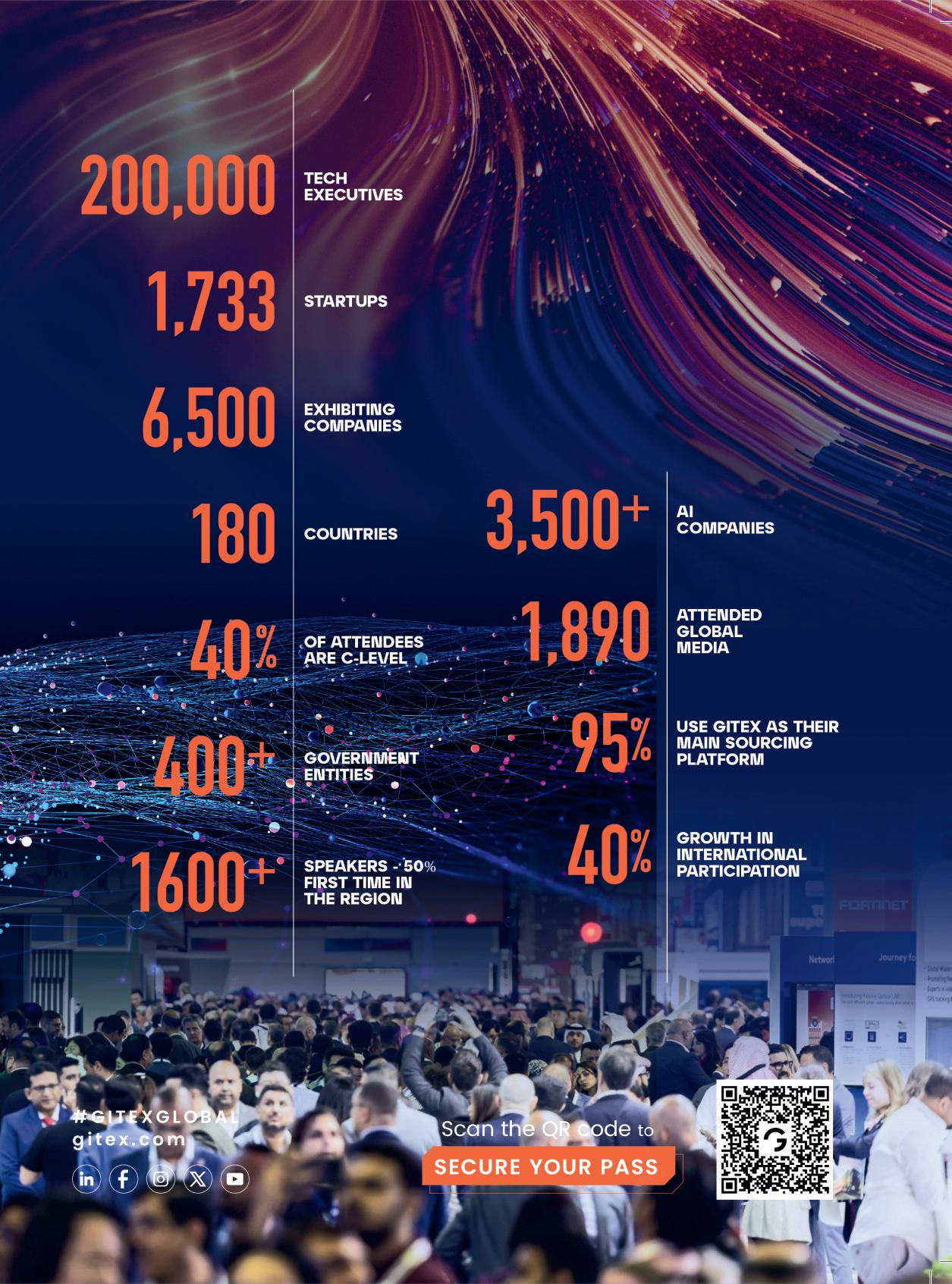


Theinternationaleducationsystemisbeinghitwitha
seismic shift due to faster advances in technology, changingstudents'needs,andincreaseddemandsfor flexibility, accessibility, and personalization. In the midst of thiseraoftransformation,anewprofessionalisdevelopingto be necessary to shape the future of learning—the EdTech transformationstrategist.Theyarethebridgeindividualswho spaneducationandtechnologyandguideschools,companies, andpolicymakerstothesuccessfulimplementationofdigital systems and tools to enhance teaching, learning, and governance.
AnEdTechtransformationstrategyisnotatechnicalexpert. Rather, they are strategic players with comprehension of pedagogy, change management, stakeholder management, anddigitalinfrastructure.Theirinitialandprimaryfunctionis to lead schools and universities through the complexities of digital change a continuous endeavor that demands somethinggreaterthantheadoptionofnewtools.Itisabout going back into curricula, improving digital literacy,


simplifying teacher training, and developing structures that aligntechnologytolearningobjectives.
Overthelastcoupleofyears,particularlywithandfollowing the COVID-19 pandemic forcing the entire world to shift to online and hybrid learning models, demand for EdTech solutions increased. Nevertheless, most institutions were unable to make the transition because they lacked strategic leadership.ThatiswheretheEdTechtransformationstrategist enters the scene. They analyze institutional goals, assess technologyreadiness,anddevelopcustomizedroadmapsthat
utilize technology as not a Band-Aid but as a sustained solution that improves educational quality and student experience.
An EdTech transformation strategist has a broad and interfunctionalrole.Anygivenday,theymaybecollaborating with school leaders, IT support staff, teachers, and even studentstounderstanddiverseneedsandchallenges.Fromthe selectionofsuitablelearningmanagementsystems(LMS)to data analytics in tracking students' performance, the strategists make sure everything online is pedagogy and

organizationalobjectives-oriented.Strategistsarealsotasked with making sure digital resources enable equity, accessibility, and inclusivity sustainabilities that characterizeeducationtoday
Maintenance of change management is one of the unique tasks of an EdTech transformation strategist. Resistance to new technology is a common roadblock in school cultures, especially where age-old traditional practice has been the norm. Strategists help schools through the process with sensitivity,training,andculture-buildingaroundinnovation, acknowledging that successful change relies as much on humans as on platforms. Strategists therefore invest in professional teacher training and continuous feedback loops inordertoadjustimplementationstrategies.
Secondly, the EdTech transformation strategy also has the responsibility of measuring the impact of technology on learning results. For the data-driven school culture of the present day, monitoring and measuring metrics like student engagement, student completion rates of a course, and skill acquisition become relevant. Strategists help institutions in developing measurement mechanisms other than standardized tests, like formative assessment, real-time feedback, and adaptive learning systems. This analytical approach enables instructors to customize instruction, identify gaps early, and make data-informed decisions on informationthatmaximizestudentoutcomes.
Apart from helping schools and universities, EdTech transformation strategists are being pivotal in the business educationandtrainingindustry Withbusinessinvestmentin

re-skilling and up-skilling employees, the strategist designs online learning environments and maps with business goals and employee development requirements. Through virtual training portals, interactive simulations, or AI-based tutor systems, the strategist ensures digital learning solutions fit wellandscaleupaswellasdeliverthedesiredresults.
The role also involves staying current with education technologytrends.TheEdTechtransformationstrategistmust constantly study newer innovations such as Virtual Reality (VR), Augmented Reality (AR), gamification, and Artificial Intelligence (AI) in the classroom. They determine which technologies really have educational value and recommend institutions when and how to adopt them. This vision sets organizationsaheadofthecurveandaheadofthecompetition inanever-changingworld.
Policy-makingandgovernancearealsosuchcriticaldomains that the EdTech transformation strategist recommends on. With rising concerns in data privacy, cybersecurity, and ethical use of AI in learning, responsible digital practice acrossinstitutionsiscalledfor Strategistshelpframepolicies to ensure the protection of students' data, comply with laws such as GDPR and COPPA, and encourage ethical practice. They are also agents of digital equity in the sense that they offeraccesstoqualitymaterialsandtoolstoallstudentsfrom diversesocioeconomicstatus.
Collaboration is at the heart of the career of an EdTech transformation leader. They collaborate with EdTech providers,non-profits,government,andresearchinstitutions to bring innovation and capital into the education environment. Such collaboration is essential to high-scale transformation, especially in the public education sector as well as within developing nations where constriction of resourceswouldhaltprogress.
Besides, the EdTech transformation strategist is to some extent also a technologists-to-pedagogues translator Teachers do not need to be always fluent in the language of technology, and IT technicians are occasionally pedagogyimmature Strategists bridge the gap by translating technology solutions to pedagogically sensible and realistically feasible in the classroom. Being change agents for communication who speak several disciplines, they cannotbedispensedwith.
With the education industry continuously evolving, the requirement for strategic, people-focused, and technologysavvy professionals will increase. This requirement is embodiedbytheEdTechtransformationstrategistinaholistic digital transformation plan keeping infrastructure, culture, pedagogy, and sustainability in mind Their actions demonstratethattechnologyisafacilitatoroflearningandnot abarrierordistraction.
In short, the EdTech transformation strategist is a transformationalandcentralplayerincontemporarylearning. Whentheyconnectdigitalresourceswithlearninggoals,lead institutions through confronting transformation, and drive innovation, they are building the foundation for the future phase of learning. They are establishing technology as a bridgetobetteroutcomesnotjustforindividuallearners,but alsotosystemsandcommunities.Aseducationitselfisbeing redefinedinthe21stcentury,thetransformationstrategistsof EdTech will be instrumental in inducing broad, long-term changes.











The contemporary education marketplace is
transforming at a very rapid pace, driven by technology innovation, changing student needs, and aglobalneedforgreaterinclusion,access,andeffectiveness in learning. Learning innovation, an overarching term describingnewmethods,tools,andtechnologiestooptimize the way education is received and conveyed, is driving this transformation. From online tools to individualized learning plans, learning innovation not only reconfigures the classroombutredefineswhat21st-centurylearningis.
Learning innovation is a process of developing and putting intopracticenewideas,practices,andtechnologiestosupport learning outcomes It is even more innovative than technologytoolapplication;itinvolvespedagogicalchanges, curriculumredesign,collaborativelearningmodels,anddatainformed instruction Our knowledge-driven world that changes extremely fast demands traditional models of learningtoberigidinordertocaterforthevarietyofstudents' needs Learning innovation provides the dynamism and adaptability required to sustain learners' interest and gain skillsforlifelonglearning.


More impactful than all learning innovations, however, is technology integration into education. The emergence of eportals, mobile apps, virtual classrooms, and artificial intelligence changed the accessibility and distribution of education. With these innovations, apart from supporting remote and hybrid learning platforms, they ensure instant feedback, independent learning, and multimedia delivery These have become crucial to reaching the world's disadvantaged population and learners in remote or remote areasbyclosingthedigitalgapandensuringinclusivity.
Personalizedlearningisalsooneofthebigsecretsoflearning innovation in the modern education. Thanks to adaptive technology and analytics, teachers can now personalize
educationtofitthestudent'spreferredlearningoption,style, and pace Personalization enables students to become engaged participants in the learning process, increase motivation, and increase retention. Rather than a one-sizefits-all curriculum, students are enabled with differentiated instruction tailored to meet their unique strength and weakness.
Moreover, learning innovation supports experiential and active learning methods. Flipped classrooms, gamification, projectlearning,andcase-basedproblem-solvinglessonsare increasingly common as they have the ability to stimulate critical thinking, creativity, and collaboration These strategies turn students into active learners from passive

recipients of information. They also enable the developmentofsoftskills such as communication, adaptability, and cooperation that are presentlyindemandinthe contemporaryworkplace.
Theroleoftheteacherhas also been dramatically changed with learning innovation. The teachers arenolongerinformation dispensers; they are designers, guides, and facilitators of engaging and interactive learning experiences. Professional development activities today emphasize digital literacy, instructional design, and data-driven instruction.Open-minded receptive instructors who can change with new ways are best positioned to create rich, studentcentered learning environmentsthatchange to meet the changing needsoftheirlearners.
Teritiary education institutions are adopting learning innovation to facilitatemoreteachingandresearch.Mixed-modeeducation approaches, MOOCs, and competency-based curriculum initiatives are becoming popular, offering flexible pathways tobroadstudentpopulations.Theinnovationsareparticularly beneficial for working professionals and adult students requiring upskilling or reskilling in the expanding dynamic labor market. Universities are also making investments in learning analytics and educational research to measure the effect of new pedagogies and institutional improvement. Outside of traditional education facilities, innovation in learningisalsotransformingcorporatelearningandlifelong learning. Organisations are using microlearning, virtual reality, and interactive simulations to deliver engaging, ondemand, and effective learning. This new paradigm is an
acknowledgmentofanewrealitythatlearningisnotconfined to classrooms—learning is a recurring process that flows along career and life development stages Education institutions and industry players are thus increasingly collaborating to envision programs that are not just intellectuallydemandingbutalsoindustry-connected.
Thesecondcriticalfactoroflearninginnovationisequityand accessibility Learning innovation must offer a level playing fieldtoalllearners,regardlessoftheirbackground,ability,or geography, to access quality learning. Universal Design for Learning(UDL),assistivetechnology,andinclusiveteaching are shattering obstacles to persons with disabilities and disadvantaged groups. Equity-based innovation improves individual and system outcomes and makes systems more equitableandresilient.
Policy and leadership also have a core position in shaping learning innovation Governments and the education ministriesoftheworldareplacinggreateremphasisonmore digital infrastructure, innovation funds, and enhancing the curriculum. Institutional and school leaders must create a cultureofexperimentationandinnovationandinviteschools and institutions to try out new models and propagate successful practices Strong leadership ensures that innovation is not only sporadic or superficial but inherent to thefabricandcultureoftheeducationsystem.
As promising progress is achieved, however, promising progress is insufficient to be an enacted learning innovator Roadblocksintheguiseofdigitaldivide,teacherresistance, budget constraints, and evidence-based assessment inadequacies are capable of thwarting innovation from ever taking flight. Successful innovation, therefore, must be addressed at every stakeholder level—students, teachers, parents, administrators, policymakers, and technology companies Research, co-collaboration, and long-term investment are the key to making innovations productive, scalable,andsustainableoverthelongterm.
As a whole, learning innovation is among the key drivers of modernization for the education sector By questioning where, why, and how to learn, pioneering approaches are making an education system more inclusive, adaptable, and efficient With personalized education, using immersive technologies,orusingnovelpedagogicapproaches,learning innovation empowers teachers and students to thrive in today's evolving world. In the years to come, embracing a culture of innovation will be essential to make sure individualsnotonlyadapttochangebutalsodrivechange.






